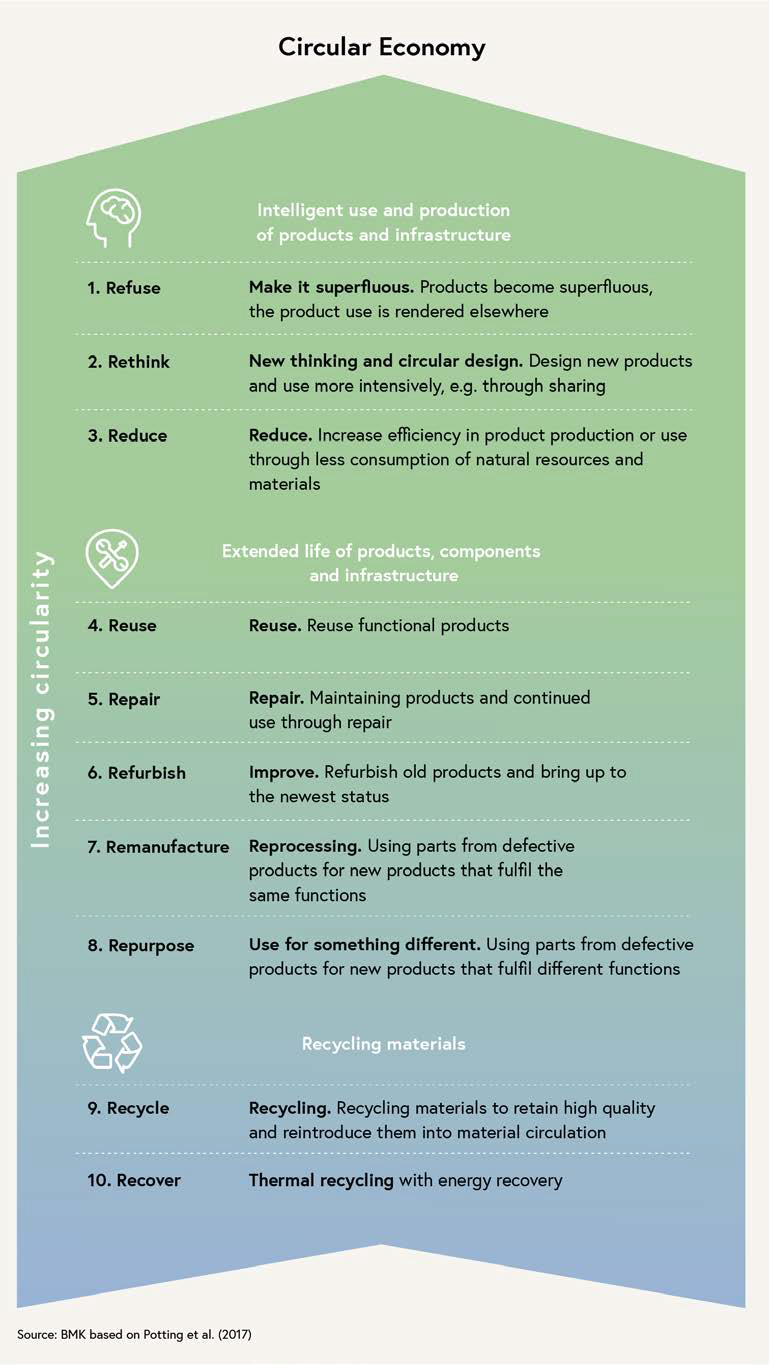The Austrian circular economy strategy
In 2021, the BMK developed a draft for a national circular economy strategy with the involvement of numerous stakeholders. Comments on the draft could be sent to the BMK until January 31, 2022. The draft was then revised and finalized together with the BMSGPK, BMAW and BML. The national circular economy strategy was adopted by the Council of Ministers on December 7, 2022.
The strategy underpins the Austrian federal government's long-term goal of transforming the Austrian economy and society into a comprehensively sustainable circular economy by 2050. This is the only way to achieve the federal government's ecological and economic goals, above all climate neutrality by 2040, and to position "Austria and Europe as a leading industrial location for high-quality, resource-conserving and low-CO2 production" as set out in the 2020-2024 government program.
The Austrian circular economy strategy is intended to advance and significantly accelerate this transformation so that Austria catches up with the pioneering countries in this area. To this end, the circular economy strategy is developing an interdisciplinary, cross-sector and cross-departmental approach that addresses the federal, state and local governments as well as businesses and citizens.
The new path - a circular economy
The vision of the strategy is to transform the Austrian economy and society into a climate-neutral and sustainable circular economy by 2050. However, the transformation of the linear economy into a circular economy requires a radically different approach to our resources. To achieve this, the Austrian circular economy strategy is based on the circular economy principles (R principles).
The central objectives of the strategy are:
- Reduction of resource consumption
- Domestic material consumption (DMC): maximum 14 tons per capita/year (2030)
- Material footprint (MF): maximum 7 tons per capita/year (2050)
- Increase resource productivity by 50 percent (2030)
- Increase circularity rate to 18 percent (2030)
- Reduce private household consumption by 10 percent (2030)
An initial progress report on the implementation of the strategy will be published at the end of 2023.
Shaping the transformation
The Austrian circular economy strategy also outlines the following six key approaches for shaping the transformation:
- Legal and regulatory framework conditions
- Smart market incentives
- Financing and funding
- Research, technology development and innovation (RTI)
- Digitalization
- Information, knowledge and collaboration
Starting points for the transformation
Based on the requirements of the EU Circular Economy Action Plan, which was launched by the European Commission in 2015 to accelerate the realization of a functioning circular economy, concrete measures and activities were defined in the following seven transformation priorities:
- Construction industry and building infrastructure
- Mobility
- Plastics and packaging
- Textile industry
- Electrical and electronic equipment, information and communication technologies (ICT)
- Biomass
- Waste and secondary resources
Further information and download of the circular economy strategy on the BMLUK website.
Further national strategies in the context of the circular economy:

